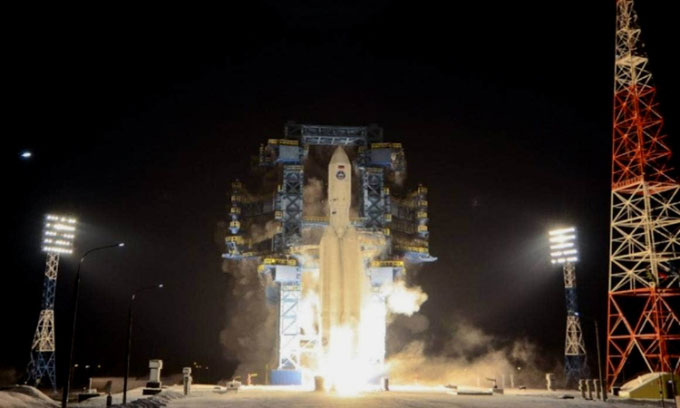The upper stage of the Angara A5 rocket encountered a malfunction during launch and became stranded in low Earth orbit, potentially falling into the Pacific Ocean today, January 6.

The Angara A5 rocket launching at Plesetsk spaceport, Russia, December 2021. (Photo: Russian Ministry of Defense)
The new-generation heavy-lift rocket Angara A5 launched a dummy satellite into space from Plesetsk spaceport, Russia, on December 27. The Angara A-5 plays a crucial role in Russia’s ambitions to place reconnaissance and navigation satellites into orbit in the coming years. This heavy launch vehicle could also transport robots, and potentially humans, to the Moon as part of a collaborative program with China.
According to the plan, the rocket was supposed to place the dummy satellite into a graveyard orbit (junk orbit) more than 35,000 km above the Earth’s surface. The initial launch proceeded smoothly. However, a malfunction during the ignition of the Persei upper stage caused it to become stranded in low Earth orbit at an altitude of about 200 km.
This orbit means that Persei will soon descend and fall back to Earth. Experts believe it is likely to land in the Pacific Ocean, but they cannot predict the exact location.
Many rocket stages and satellites have fallen back to the atmosphere under strict control, meaning space agencies know the exact time and location of their descent. However, this is not the case for the Persei rocket stage. It will fall uncontrollably, making it very difficult to predict where any debris that does not burn up in the atmosphere (if any) will land.
The U.S. space tracking service NORAD has also detected an unidentified object designated 50505. Indicators suggest that this object closely resembles the Persei rocket stage along with the stranded dummy satellite in low Earth orbit.
Astronomer Joseph Remis is monitoring the orbit of the rocket stage and predicts it will fall at 3:02 PM on January 6 (Hanoi time) with an error margin of about 14 hours. Meanwhile, astrophysicist Jonathan McDowell at the Harvard-Smithsonian Center for Astrophysics estimates that the rocket stage along with its cargo weighs about 4 tons, and some small debris could reach the Earth’s surface.


















































